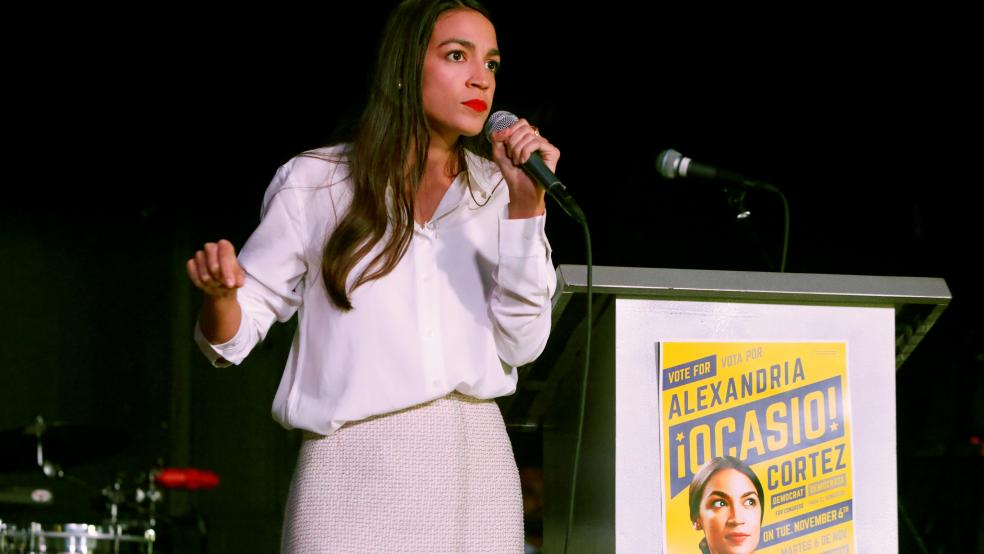The lively debate over the proposal by Rep. Alexandria Ocasio-Cortez (D-NY) to raise the top marginal tax rate to 70 percent continues, as it no doubt will for many months to come, with former Wisconsin governor Scott Walker jumping into the fray Tuesday.
A marginal dispute: In what seemed to be a jab at Ocasio-Cortez, Walker tweeted a parable of sorts about the injustice of confiscatory tax rates: “Explaining tax rates before Reagan to 5th graders: ‘Imagine if you did chores for your grandma and she gave you $10. When you got home, your parents took $7 from you.’ The students said: ‘That’s not fair!’ Even 5th graders get it.”
The problem, as many critics were quick to point out, is that Walker ignored the difference between marginal and effective tax rates, making it seem as though a tax rate intended for only a small number of high earners would apply to low-income workers as well. The Economist’s Jon Fasman replied, “It's not fair. It's also not accurate. Is the ex-governor of Wisconsin confused, or is he spending his post-political career lying to 10-year-olds?”
Ocasio-Cortez also replied to Walker in a tweet of her own: “Explaining marginal taxes to a far-right former Governor: Imagine if you did chores for abuela & she gave you $10. When you got home, you got to keep it, because it’s only $10.” She added that while the tax wouldn’t apply to the $10 earned by a fifth grader, it would apply to the local billionaire.
A question of revenue: Confusion over marginal tax rates aside, Kyle Pomerleau and Huaqun Li of the conservative Tax Foundation took a look Monday at how much revenue a 70 percent top tax rate would actually raise for the government. In their view, the answer is not much.
Pomerleau and Li analyzed two different proposals, one in which a 70 percent bracket rate is simply applied to incomes over $10 million within the existing tax structure, and a second in which the higher rate is applied to both ordinary and qualified income – in other words, to a big chunk of capital income. And they looked at both static and dynamic models, with the latter incorporating behavioral responses to the imposition of new taxes.
The analysts found that adding a new bracket but making no other changes would generate $291 billion over 10 years, while adding the new top rate and applying it to capital income would generate far less, just $51 billion over 10 years. The difference is explained by wealthy taxpayers’ reaction to higher taxes on capital income; facing a higher tax, they’ll cut back on realizing gains, reducing tax revenues.
The higher marginal tax rate fares worse in the dynamic model. Pomerleau and Li assume that wealthy taxpayers will reduce their work hours in the face of higher tax rates, and as a result the 70 percent marginal rate applied to ordinary income would produce just $189 billion over ten years. If capital income is included, the tax would actually lose money, with revenues falling by $63 billion over a decade.
A popular idea nevertheless: Although the Tax Foundation analysis is quite pessimistic, other estimates have found that the tax could raise substantial sums, though not necessarily enough to cover the cost of large-scale programs like universal health care or a job guarantee. For example, The Washington Post’s Jeff Stein, working with several tax experts, found that Ocasio-Cortez’s tax proposal could raise as much as $700 billion over 10 years. But despite the wildly divergent revenue estimates, one thing is clear: a higher marginal tax on the wealthy is popular.
According to a new poll from The Hill-HarrisX, 59 percent of Americans support the idea of raising the top marginal tax rate to 70 percent on incomes over $10 million. The results held for different demographic groups, with a majority of both men and women supporting it, as well as voters in the South and in rural regions. Most Democrats and independents backed the idea, and although a majority of Republican did not, it was close, with 45 percent supporting and 55 percent opposed.




